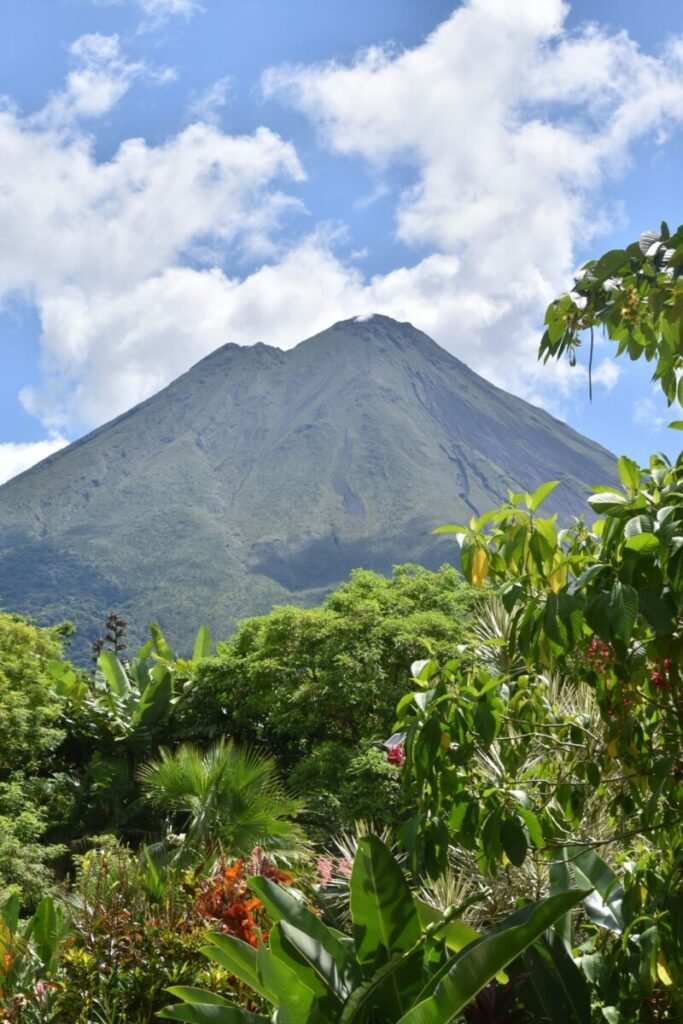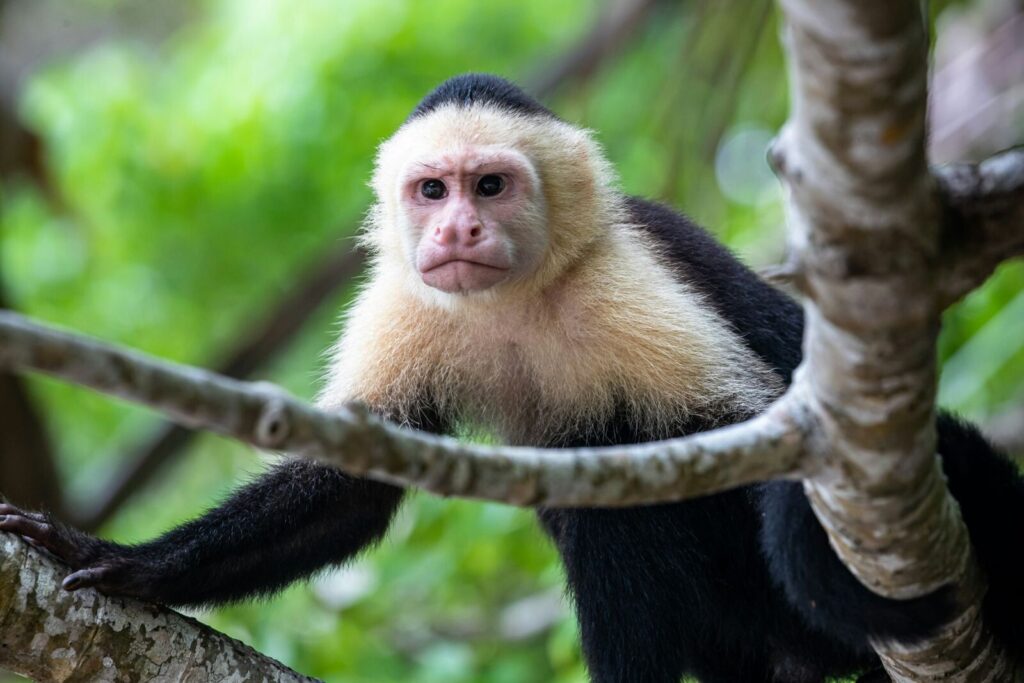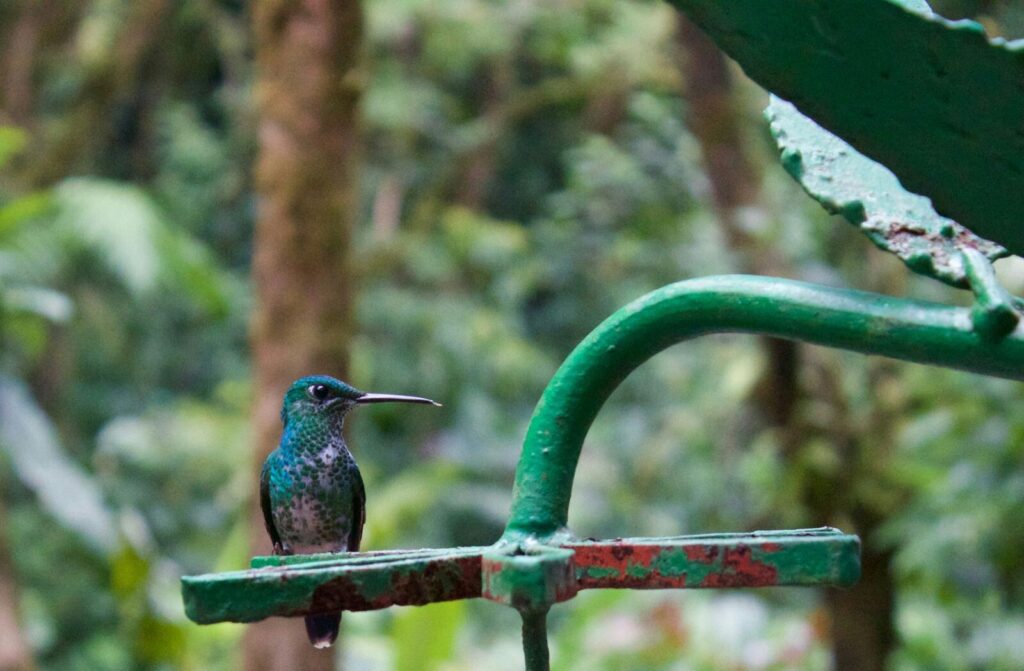Costa Rica, a small country but with incredible biodiversity. Its natural beauty, landscapes, and all the activities it offers are among the main reasons why this destination welcomes thousands of visitors every year.
Located between Nicaragua to the north, Panama to the southeast, the Pacific Ocean to the west, and the Caribbean Sea to the east, Costa Rica is home to vast rainforests, active volcanoes, and diverse wildlife.

Today, we’ll explore the first part of the biodiversity of this wonderful destination, in case you’re considering traveling there to experience your volunteer work.
Costa Rica is home to over 500,000 species, including birds, howler monkeys, sloths, and jaguars, among many others.

MAMMALS
Monkeys: There are several species of monkeys, such as the howler monkey, the white-faced monkey (capuchin), and the spider monkey.
- The howler monkey, as its name suggests, is known for its loud and characteristic howl, which can be heard from several kilometers away. They are medium-sized, with males weighing up to 7 kg and females being slightly smaller. Their fur is dark, ranging from brown, black, or gray. They are primarily folivores (leaf-eaters), though they also consume fruits, flowers, and buds. Their leaf-rich diet provides them energy but also makes them move slowly to conserve it. They live in family groups of 10 to 20 individuals, typically led by a dominant male.
- The white-faced monkey, also known as the white-headed capuchin, is highly intelligent and curious, making it a fascinating species to observe in the wild. It stands out for its white or cream-colored face, contrasting with its dark fur, usually brown or black. It’s smaller than the howler monkey, with males weighing between 3 and 4 kg and females a bit lighter. They can live between 30 and 40 years in captivity, though their life expectancy in the wild is shorter due to predators and other factors. They are omnivores with a varied diet that includes fruits, leaves, insects, small vertebrates, bird eggs, and even frogs. They are skilled food handlers and use their hands with great dexterity. They live in groups of 10 to 20 individuals, usually led by a dominant female. They are territorial and use vocal calls to communicate and warn other groups.
- The spider monkey gets its name from its appearance, as its long, thin limbs and prehensile tail give it a spider-like look as it moves through the trees. It is one of the largest primates in Costa Rica. Males can weigh between 7 and 9 kg, and females tend to be slightly smaller. Their fur varies in color, but it’s generally shades of brown, black, or gray, with their faces surrounded by dark skin. They are mainly frugivores, meaning much of their diet consists of ripe fruits. They also eat leaves, flowers, seeds, and occasionally insects or small vertebrates. Spider monkeys live in large groups, sometimes with up to 30 individuals, but often break into smaller subgroups during the day to forage. They use a combination of vocalizations, gestures, and tail movements to communicate, and can emit loud calls to warn other monkeys.
Sloths: There are two main species, the two-toed sloth and the three-toed sloth, famous for their slow lifestyle.
- The two-toed sloth is one of the most unique and fascinating animals, known for its slow and peaceful life, spending most of its time hanging from trees in tropical rainforests. It has two large claws on its front limbs, while its hind legs have three claws. These claws allow it to easily hang from branches. It is a medium-sized animal, with a robust body that can measure between 58 and 70 cm in length. It weighs between 4 and 8 kg. Its fur is thick and brown or gray in color, often covered with green algae that grow in its hair, helping it camouflage in the environment. This fur also hosts small insects like moths and beetles. Sloths have an extremely slow metabolism, allowing them to move leisurely to conserve energy. They can take an entire day to travel just a few meters. They are primarily folivores, meaning they eat leaves, though they can also consume fruits, flowers, and even small insects or lizards. They are mainly nocturnal, meaning they are more active at night. Females usually have one offspring after a gestation period of about 10 months. The young stay close to the mother for several months, clinging to her fur as she slowly moves through the trees.
- The three-toed sloth, also known as the brown-throated sloth, differs from the two-toed sloth in several ways. As its name suggests, this sloth has three toes on each of its limbs, both front and rear, with long, curved claws that allow it to easily hang from branches. It is slightly smaller than the two-toed sloth, with a length of between 45 and 75 cm and a weight of 3 to 6 kg. Its fur is dense and brown or light gray in color. Like the two-toed sloth, its fur can be covered with green algae, which provides camouflage in the trees. It has a pale face with an expression that always seems to be smiling, making it very endearing to observers. They are almost exclusively folivores and have a very slow digestive system. Unlike the two-toed sloth, which is nocturnal, the three-toed sloth is primarily diurnal. They have an unusually low body temperature for a mammal, between 30 and 34°C. This helps them save energy but also makes them vulnerable to sudden temperature changes. Females generally have one offspring every two years, after a gestation period of about 6 months.
Big felines: Costa Rica is home to large felines like the jaguar, puma, and ocelot, although they are difficult to spot in the wild.
Tapirs: Also known as the Central American tapir, they are the largest land mammals in the country.
- The Central American tapir can weigh between 150 and 300 kg and measure around 2 meters in length. They stand about 1.2 meters tall, making them the largest mammals in the region. They have a sturdy body and dark gray or brown skin. One of their most distinctive features is their elongated, flexible snout, which resembles a small trunk. This snout allows them to grasp leaves, fruits, and branches. They have three toes on their hind legs and four on the front, giving them excellent balance for walking on muddy or uneven terrain. They are herbivores, feeding on a variety of leaves, branches, fruits, and grasses. They are especially important for the ecosystem because, by dispersing seeds through their feces, they help maintain the forest’s biodiversity. They are mostly nocturnal and crepuscular, meaning they are more active at night and dawn. During the day, they tend to rest hidden in vegetation to avoid predators. Additionally, they are excellent swimmers and enjoy submerging in rivers and lagoons, which helps regulate their body temperature and rid themselves of parasites. Females give birth to a single offspring after a gestation period of about 13 months. Tapir calves are born with brown fur with white stripes and spots that help them camouflage in the forest. These markings disappear as they grow, usually after about six months.
MARINE ANIMALS
Sea turtles: Costa Rica is a key nesting site for sea turtles, such as the leatherback turtle, the largest in the world.
- The leatherback turtle, also known as the leatherback sea turtle, can grow up to 2 meters in length and weigh between 300 and 700 kg, though some specimens have exceeded 900 kg. Unlike other sea turtles, the leatherback does not have a hard shell. Its shell is softer and more flexible, covered by leathery skin with a pattern of ridges that give it a leather-like appearance. They are generally black with white spots, and their shell has a slightly oily texture, which helps reduce friction while swimming. They primarily feed on jellyfish and other gelatinous species. Their diet plays a crucial role in the marine ecosystem, as they help control jellyfish populations, maintaining balance in the food chain. Despite their large size, leatherback turtles are fast and agile swimmers. They can dive to depths exceeding 1,200 meters, deeper than any other sea turtle species, and remain underwater for up to 85 minutes. Female leatherbacks return to the beaches where they were born to lay their eggs. Between November and April, leatherbacks arrive at Costa Rica’s coasts to nest. They dig a nest in the sand and lay between 60 and 120 eggs, which they carefully cover before returning to the sea. After about two months of incubation, the hatchlings emerge and make their way to the ocean.
Dolphins and whales: In Costa Rican waters, dolphins and various species of whales, such as the humpback whale, can be spotted.
Reefs: On the Caribbean coast, coral reefs host a wide variety of colorful fish, rays, and sharks.

We’ll leave birds, reptiles and amphibians, and insects for another blog post.
As we mentioned, this country won’t leave you indifferent with its biodiversity.




